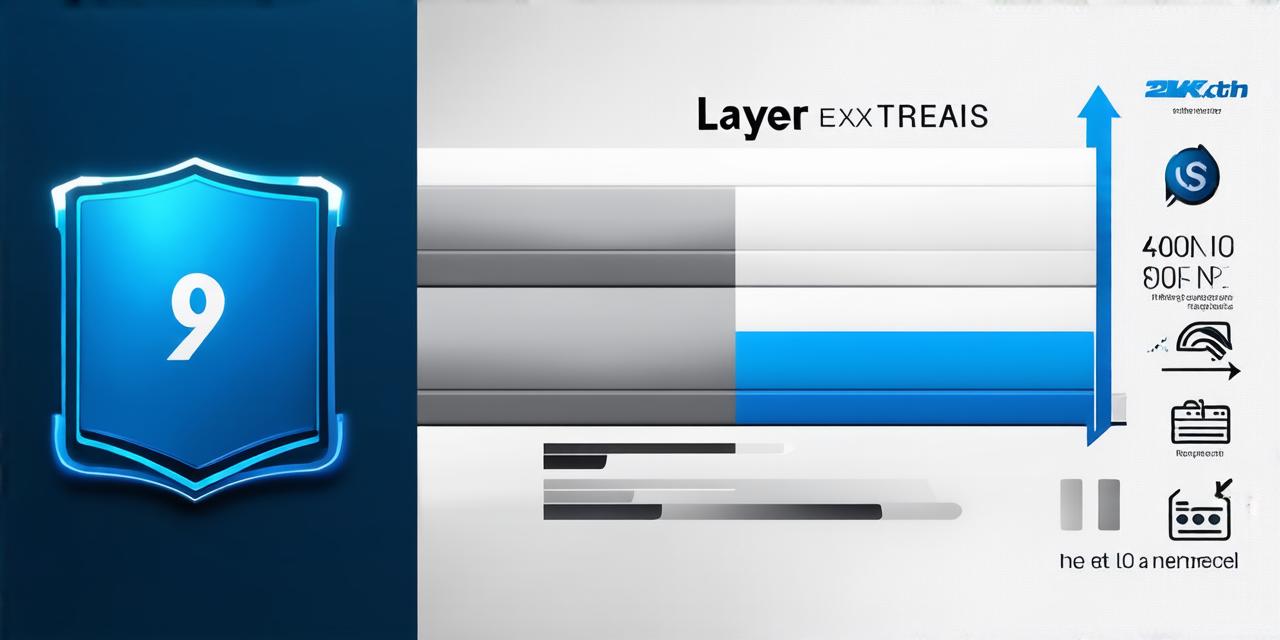Blockchain technology has revolutionized the way we store and transfer data. It is decentralized, secure, and transparent, making it an ideal solution for many use cases.
However, not all blockchains are created equal. There are several layers that make up a blockchain, each with its own unique characteristics and functions.
Layer 1: The Core Layer
Layer 1 is the core layer of a blockchain. It is responsible for maintaining the integrity of the network by ensuring that transactions are processed efficiently and securely.
Protocol
The protocol refers to the set of rules that govern how data is transmitted between nodes in a blockchain network. It defines how transactions are validated, verified, and processed. Common protocols include Bitcoin’s Proof of Work (PoW) and Ethereum’s Proof of Stake (PoS).
Consensus Mechanism
The consensus mechanism is the algorithm that ensures all nodes on a blockchain network agree on the state of the ledger. It determines how new blocks are added to the chain, and how existing blocks are verified. The most popular consensus mechanisms include PoW, PoS, Delegated Proof of Stake (DPoS), and Byzantine Fault Tolerance (BFT).
Ledger
The ledger is a distributed database that records all transactions on a blockchain network. It is immutable, meaning that once data is added to the ledger, it cannot be changed. The most well-known ledgers include Bitcoin’s blockchain and Ethereum’s blockchain.
Layer 2: The
Sidechains
Layer 2 refers to the sidechains or off-chain solutions that are built on top of a blockchain network. These solutions are designed to improve scalability, privacy, and security while still maintaining the core functionality of the blockchain. There are several types of Layer 2 solutions, including:
State Channels
State channels are a way to offload transactions from the main chain by allowing multiple parties to execute transactions privately and securely between each other. This can significantly improve the speed and efficiency of transactions. State channels are used in platforms like Lightning for Bitcoin and Plasma for Ethereum.
Off-Chain Data Storage
Off-chain data storage is a solution that allows data to be stored outside of the main blockchain. This reduces the load on the network, making it faster and more efficient. Examples of off-chain data storage solutions include IPFS and Filecoin.
Sidechains
Sidechains are independent blockchain networks that are built on top of a main chain. They can be used to solve specific use cases, such as scaling or privacy. The most well-known sidechain is Bitcoin Cash, which was created as a hard fork of the original Bitcoin blockchain to increase its scalability.
The Importance of Layer 1 and Layer 2 in Blockchain
Both Layer 1 and Layer 2 are essential for the smooth functioning of a blockchain network. Layer 1 ensures that transactions are processed efficiently and securely, while Layer 2 improves scalability and privacy.
Layer 1 is crucial because it provides the foundation for the network. Without a secure and efficient core layer, transactions would be slow, expensive, and vulnerable to attacks. The consensus mechanism in particular is critical because it ensures that all nodes on the network agree on the state of the ledger, preventing fraud and double-spending.
Layer 2 solutions are also important because they enable blockchain networks to scale to handle more transactions and users. State channels, off-chain data storage, and sidechains all provide ways to improve the efficiency of transactions and reduce the load on the main chain.
Real-Life Examples of Layer 1 and Layer 2 in Blockchain
There are several real-life examples of Layer 1 and Layer 2 in blockchain. Here are a few:
Layer 1: Bitcoin
Bitcoin is the first and most well-known cryptocurrency, and it has been around since 2009. It uses a consensus mechanism called Proof of Work (PoW), which requires miners to solve complex mathematical problems to validate transactions and add them to the blockchain. Bitcoin’s protocol is designed to be decentralized and open-source, making it easy for anyone to participate in the network.
Layer 2: Ethereum
Ethereum is a platform that allows developers to build smart contracts and decentralized applications (DApps) on top of the blockchain. It uses a consensus mechanism called Proof of Stake (PoS), which eliminates the need for miners and reduces energy consumption. Ethereum’s protocol is designed to be flexible, allowing developers to create custom solutions for specific use cases.
Layer 2: Bitcoin Lightning Network
The Bitcoin Lightning Network is a state channel solution that allows multiple parties to execute transactions privately and securely between each other. It can significantly improve the speed and efficiency of Bitcoin transactions, making it an ideal solution for micropayments and real-time payments. The Lightning Network has already processed over $3 billion in transactions and has over 20,000 nodes.
Layer 2: Ethereum Plasma
Ethereum Plasma is a scalable sidechain solution that allows developers to build DApps on top of the main chain without compromising security or performance. It uses a consensus mechanism called Plasma Fee Market, which allows users to pay for transactions based on the level of complexity and urgency. Ethereum Plasma has already been used to build several successful DApps, including 0x and Kyber Network.
FAQs
What is Layer 1 in blockchain?
Layer 1 in blockchain refers to the core layer that ensures the integrity of the network by maintaining the protocol, consensus mechanism, and ledger.
What is Layer 2 in blockchain?
Layer 2 in blockchain refers to off-chain solutions that are built on top of a main chain to improve scalability, privacy, and security while still maintaining the core functionality of the blockchain.
What is state channels in blockchain?
State channels in blockchain allow multiple parties to execute transactions privately and securely between each other, significantly improving the speed and efficiency of transactions.
What is off-chain data storage in blockchain?
Off-chain data storage in blockchain allows data to be stored outside of the main blockchain, reducing the load on the network and making it faster and more efficient.

What is a sidechain in blockchain?
<p
